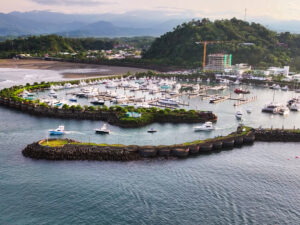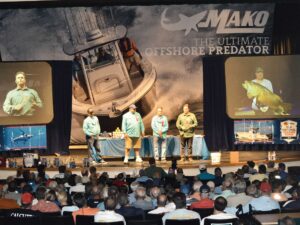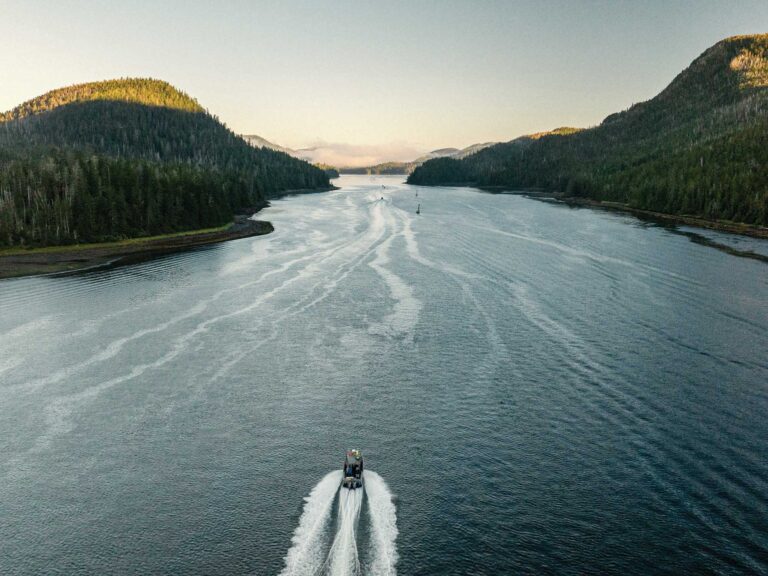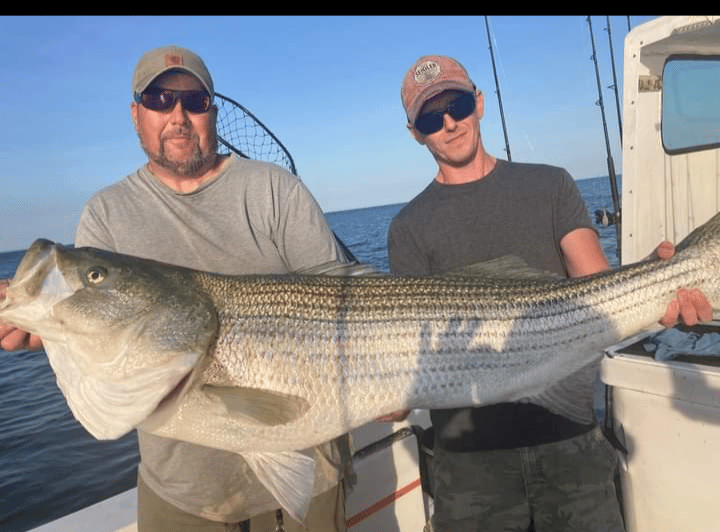
Capt. Hugh Chancey, 45, is the quintessential seaside New Yorker. He’s a fast-talking charter captain full of brash and bravado, quick with hard fishing facts learned from years of on-the-water experience. He’s a no-nonsense kind of balls-to-the-water fisherman who cuts no one slack, tells it like it is with good humor, and puts more big fish in his charter boat in a morning than many anglers see in a whole season fishing on their own. Chancey is a monster striped bass hunter, and he’s made a name for himself putting his charter clients on 50-pounders regularly.
Nothing Beats Experience When Striper Fishing
When asked how he is able to lead so many anglers to so many heavyweight striped bass, Chancey is quick to the point.
“I’m out here all day almost every day, so I’m on the fish—unlike someone who’s just fishing once or twice a month or once a week,” he says. “And the striped bass fishing at Montauk is on fire. Don’t let anyone tell you that stripers are in tough shape, because they’re not. Bait is everywhere, and that’s why the stripers are here. Find the bait, know the structure bottom, and you’ll consistently catch fish.”
Chancey uses his electronics with a seasoned eye. Anytime he catches a big striper, he marks the spot on his GPS color graph depth sounder.
“I go back to those spots and see what’s there,” he says. “There’s always something — a hump on the bottom, a rock or a muscle bed—something holds those fish. And there will be other big stripers on that spot in the future—you can bank on that. That’s why I’ve got a lot of great spots that I can check in a day and stay on the fish as they move around.”
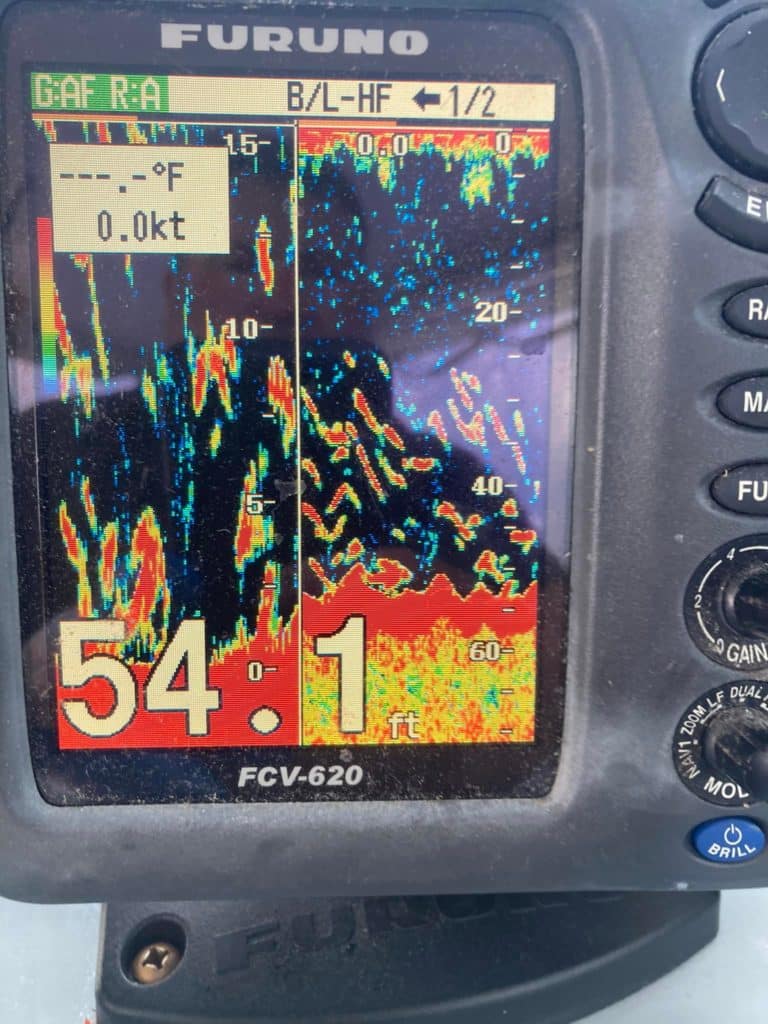
Jigging for Stripers is a Top Tactic
And when the fishing is good, Chancey stays in the game for a long duration. “I’ve charter fished for six straight days, haven’t been to my home in Montauk in all that time,” he said. “My wife had to bring my daughter down to the boat just so I could visit with her.”
That kind of dedication and passion for fishing invariably results in unmatched success, and Chancey has the photos and stories of many 50-pound stripers to prove it. He’s charter fished out of Montauk since 2002, landing at least 40 stripers of 50 pounds or more for clients. Countless other stripers in the 20- to 45-pound class have been caught in those years, too.
He fishes 1 to 4 anglers out of a 27-foot Cape Dory boat, named the Ila-Anne.
Chancy fishes a lot with diamond jigs, most locally made, in silver or gold colors from 2 to 10 ounces. “You got to match the hatch with your lures, give fish something comparable to the size bait they’re feeding,” he explains. “Bait is the key. I see the bait they feed on because fish we catch disgorge it, and I just use lures that match the size and color of the sand eels, anchovies or whatever they’re feeding on.”
Chancey says straight up-and-down vertical jigging is waste of time because boats scare stripers.
“I want my anglers to cast away from the boat, and we drift over structures I want to target,” he says. “A boat shadow or profile spooks fish, and if you pound a spot time and again they get pressured and move. Anglers have got to move too, following the bait and gamefish.”
Drift Fishing for Striped Bass
Hugh is very precise in his fishing drifts. Some are short on small structures, others are longer drifts across bigger structures. Often his best structure locations are what he calls “a spot on a spot,” which usually is a key structure element on a bigger structure location.
Such a place may be where a shell bar mound peaks, then falls off to deeper water. Or where there’s a turn in a structure bar. Add to those elements tide flow, time of day, bait supply, tackle and technique, and feed all those things go into the computer-like fishing mind of a guy like Chancey and it results in more caught fish per allotted time on the water.
Hugh uses spinning or plug tackle, whatever an angler is comfortable using. He employs braided line with 40 to 50 feet of 50-pound test Trilene clear monofilament leader. He likes mono because it slows his lure sink rate, allowing lures and sometimes baits to stay “in the strike zone” for the longest duration during a cast-and-drift structure presentation.
Good Structure Attracts Big Striped Bass
Chancey says big stripers habitually come from the same structure spots where he’s caught big fish previously. But when the fishing is red hot — as it is now at Montauk — he’ll catch dozens of lesser stripers in the 20- to 40-pound range before he hooks a 50-pounder.
“Good structure, with good tide flow, with lots of bait, and you have the recipe for great striper fishing,” he says. “But bait is vital to success. The fish are going to be where the food is. You wouldn’t go to a barbecue unless there was plenty of food, and stripers won’t stay if there’s no food.
“I have a commercial fisherman’s attitude about stripers — if I don’t catch fish, I don’t make money.” Which is why Chancey is living his best life now at Montauk, and hasn’t been home in almost a week.
Editor’s Note: Got an interesting catch? We’d love to hear about it! Drop us a line with all the details at catches@saltwatersportsman.com.

